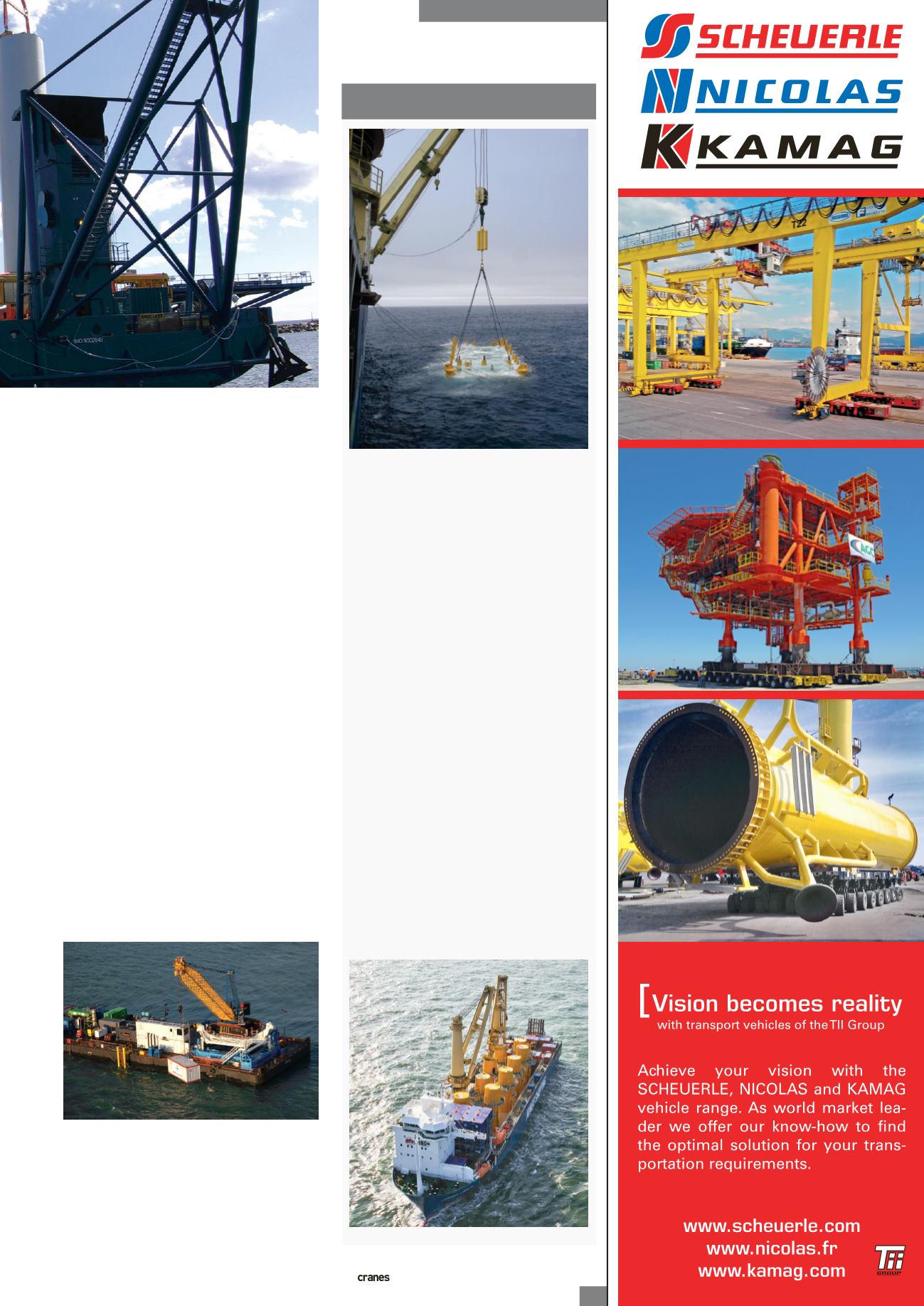
engineering input.”
For turbine installation projects, Sea
Power stabilises itself using the four jack-
up legs. The crane then lifts the nacelle
at a radius of 16 m. “At this stage the
superlift mast is not connected to the
vessel,” a company spokesperson says.
“The crane then slews 90 degrees along the
longitudinal axis of the vessel, connects the
superlift and elevates the nacelle into its
assembly position at 22 metres.”
Future trends
The trend for increasing sizes of offshore
wind turbines could however change the
way wind turbines are installed and the
need for high lifting capacity cranes could
be phased out. A spokesperson from
Liebherr explains more, “Wind turbine
companies are looking for alternative ways
to install wind turbines, other than cranes.
This is because the turbines are getting
bigger and more difficult to be
installed offshore.”
Other areas that are due for change
in the offshore heavy sector are
platform modification and platform
decommissioning projects, which have
been growing in the last few years.
■
INTERNATIONAL AND SPECIALIZED TRANSPORT
■
OCTOBER 2013
59
OFFSHORE LIFTING
>
DEEP SEA INSTALLATION
Heavy lift shipping and offshore
transportation and installation contractor,
Jumbo, has been awarded a contract by
Malaysian pipelay contractor, Sigur Ros to
oversee the transportation and installation
of 126 gravity anchor spreads. The spreads
will be installed 1,400 m under water
using two 900 tonne mast cranes on the
vessel Fairplayer.
The spreads are made up of a
230 tonne gravity anchor, tether wire and
subsea buoys, which will be used to moor a
pipeline, a company spokesperson said. The
pipeline will have a diameter of
1,600 mm and will run 80 km from Turkey
to Northern Cyprus and will floated at a
depth of approximately 250 m.
For the project, the anchor spreads
will be lowered into position using the
Fairplayer’s mast cranes and its DP2
system, which will be used to maintain the
vessel’s position. “One of the cranes will
oversee the deployment of the buoy and
tensioning of the tether wire, whilst the
other will lower the anchor,” a company
spokesperson said. The project is due to
start the end 2013.
A 900 tonne
mast crane
at work on
Fairplayer
The Fairplayer
is fitted with
two 900 tonne
mast cranes
A T700 Barge Master heave compensation
system rented by Boskalis. The smaller new
Barge Master T40 system (see box story on
motion compensated cranes) is based on the
Barge Master T700. The system compensates
roll, pitch and heave to keep a vessel mounted
crane stable when in operation at sea.


